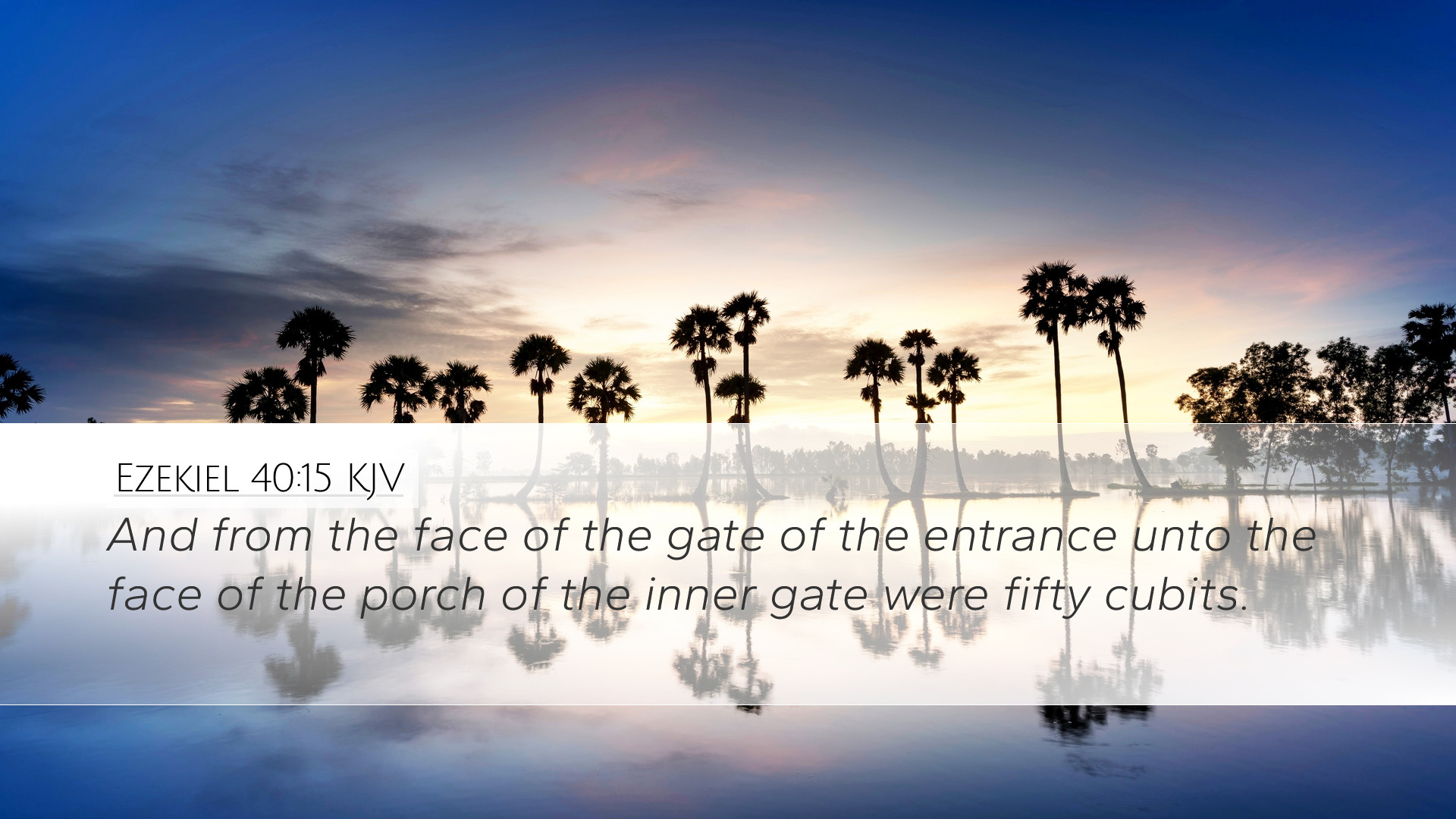Ezekiel 40:15 Commentary
Bible Verse: "And the measuring reed, which the man had in his hand, was six cubits long by the cubit and an hand breadth: so he measured the breadth of the building, one reed; and the height, one reed."
Introduction
The verse of Ezekiel 40:15 is part of a larger vision that Ezekiel receives concerning the structure and worship practices in a future temple. This chapter marks a significant transition in Ezekiel’s prophetic ministry as he embarks on a detailed description of the temple, reflecting God's desire for a restored relationship with His people.
Contextual Background
Ezekiel’s prophecies are often set against the backdrop of Israel’s exile in Babylon. This chapter, in particular, is crucial because it outlines a restoration plan—a new temple that symbolizes God’s presence among His people. Various commentaries elaborate on how the dimensions and details of this vision serve theological purposes.
Historical Interpretation
- Matthew Henry: Emphasizes the importance of measurements as it symbolizes order, structure, and the holiness of God's dwelling. The use of the reed for measuring signifies that God's plans are precise and intentional.
- Albert Barnes: Observes that the measurements provided here signify completeness and perfection in the design of God’s sanctuary. The emphasis on specific dimensions invites believers to reflect on the nature of divine revelation and its implications for worship.
- Adam Clarke: Points out that the specific use of cubits and the additional handbreadth provide a deeper insight into the dimensions that reflect God's order. Clarke also discusses the significance of every detail in the temple design representing aspects of the spiritual life of the community.
Theological Insights
At the core of Ezekiel’s temple vision is the conviction that God is committed to dwell among His people despite their failures.
- Divine Presence: This vision reinforces the understanding that God's desire to be among His people is pivotal. The detailed measurements indicate that God's life and presence can be experienced in tangible, structured ways.
- Holiness and Order: The meticulous nature of the temple’s design underlines the necessity of holiness in worship. Each measurement not only serves a practical purpose but symbolizes the reverence and sanctity required in God’s presence.
- Covenant Renewal: The measuring symbolizes God's commitment to His covenant with Israel. As the measuring reed describes precise boundaries, it also mirrors the faithfulness of God’s promises and His assertive re-establishment of worship among His people.
Practical Applications
For pastors and theologians, this passage serves as a rich source for preaching and teaching on the themes of restoration, holiness, and the presence of God.
- Understanding God's Intent: Just as God provided specific measurements for His temple, He has provided specific guidelines for our worship and lifestyle, emphasizing the importance of aligning with His will.
- Symbol of Restoration: The temple serves as a model of hope for congregations facing spiritual desolation; God’s plans for restoration are detailed and sure, which should encourage believers to trust in His promises.
- Encouraging Structure in Worship: Just as Ezekiel highlights the order of the temple, church leaders are encouraged to cultivate environments in their ministries that reflect God’s holiness and order in worship.
Conclusion
The vision contained within Ezekiel 40:15 is a testament to the meticulous care and love God has for His people and His desire to dwell among them in holiness. By examining the implications of this passage through various commentaries, it becomes clear that there are profound theological truths that encourage, challenge, and inspire believers today.


